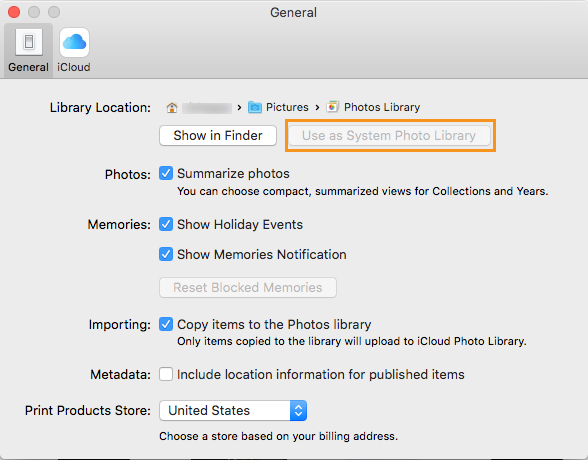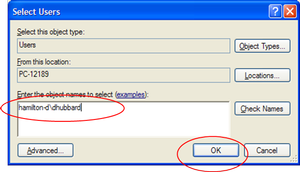Mac System Library Assets
System Icons (iOS 12 and Earlier)
In iOS 13 or later, prefer using SF Symbols to represent tasks and types of content in your app. If your app is running in iOS 12 or earlier, follow the guidance below.
Apr 01, 2020 If you have multiple photo libraries on your Mac, you can choose one to be the System Photo Library. The System Photo Library is the only library that can be used with iCloud Photos, Shared Albums, and My Photo Stream. Photos in your System Photo Library are available in apps like iMovie, Pages, and Keynote. I see 2 'Program Files' folders - 1 has 'Program Files (x86)' and that's where the TechSmith folder is, but the library assets aren't in that folder. The library assets are functioning fine when added to a new project, but anything that has been edited previously on another computer won't open. Jan 12, 2020 Apple hides the Library folder by setting a file system flag associated with the folder. Any folder on your Mac can have its visibility flag turned on or off; Apple just chose to set the Library folder's visibility flag to the off state. Asset management functionality in a DAM system is comprised of several tools for manipulating digital assets: file conversion, metadata editing, version management and digital rights management. These tools help make assets more secure as well as easier to find and collaborate on.
The system provides built-in icons that represent common tasks and types of content in a variety of use cases.
Delete itunes library. In apps running iOS 12 and earlier, it’s a good idea to use these built-in icons as much as possible because they're familiar to people.
Use system icons as intended. Every system-provided image has a specific, well-known meaning. To avoid confusing users, it’s essential that each image be used in accordance with its meaning and recommended usage.
Provide alternative text labels for icons. Alternative text labels aren’t visible onscreen, but they let VoiceOver audibly describe what's onscreen, making navigation easier for people with visual impairments.
Design a custom icon if you can’t find a system-provided one that meets your needs. It’s better to design your own than to misuse a system-provided image. See Custom Icons.
Navigation Bar and Toolbar Icons
Use the following icons in navigation bars and toolbars. For developer guidance, see UIBarButtonSystemItem.
TIP You can use text instead of icons to represent items in a navigation bar or toolbar. For example, Calendar uses “Today,” “Calendars,” and “Inbox” in the toolbar. You can also use a fixed space element to provide padding between navigation and toolbar icons.
| Icon | Name | Meaning | API |
|---|---|---|---|
| Action (Share) | Shows a modal view containing share extensions, action extensions, and tasks, such as Copy, Favorite, or Find, that are useful in the current context. | action | |
| Add | Creates a new item. | add | |
| Bookmarks | Shows app-specific bookmarks. | bookmarks | |
| Camera | Takes a photo or video, or shows the Photo Library. | camera | |
| Cancel | Cancel | Closes the current view or ends edit mode without saving changes. | cancel |
| Compose | Opens a new view in edit mode. | compose | |
| Done | Done | Saves the state and closes the current view, or exits edit mode. | done |
| Edit | Edit | Enters edit mode in the current context. | edit |
| Fast Forward | Fast-forwards through media playback or slides. | fastForward | |
| Organize | Moves an item to a new destination, such as a folder. | organize | |
| Pause | Pauses media playback or slides. Always store the current location when pausing, so playback can resume later. | pause | |
| Play | Begins or resumes media playback or slides. | play | |
| Redo | Redo | Redoes the last action that was undone. | redo |
| Refresh | Refreshes content. Use this icon sparingly, as your app should refresh content automatically whenever possible. | refresh | |
| Reply | Sends or routes an item to another person or location. | reply | |
| Rewind | Moves backwards through media playback or slides. | rewind | |
| Save | Save | Saves the current state. | save |
| Search | Displays a search field. | search | |
| Stop | Stops media playback or slides. | stop | |
| Trash | Deletes the current or selected item. | trash | |
| Undo | Undo | Undoes the last action. | undo |

Tab Bar Icons
Use the following icons in tab bars. For developer guidance, see UITabBarSystemItem.
In the Terminal window, enter 'open library'. How to get to user library mac app. The library opens in a Finder window.To permanently show all hidden files:. Enter 'Terminal'.
| Icon | Name | Meaning | API |
|---|---|---|---|
| Bookmarks | Shows app-specific bookmarks. | bookmarks | |
| Contacts | Shows the person’s contacts. | contacts | |
| Downloads | Shows active or recent downloads. | downloads | |
| Favorites | Shows the person’s favorite items. | favorites | |
| Featured | Shows content featured by the app. | featured | |
| History | Shows recent actions or activity. | history | |
| More | Shows additional tab bar items. | more | |
| Most Recent | Shows content or items recently accessed within a specific period of time. | mostRecent | |
| Most Viewed | Shows the most popular items. | mostViewed | |
| Search | Enters a search mode. | search | |
| Top Rated | Shows the highest-rated items. | topRated |

Home Screen Quick Action Icons
Mac System Library Assets List
Use the following icons in home screen quick action menus. For developer guidance, see UIApplicationShortcutIconType.
Mac System Library Assets For Sale
| Icon | Name | Meaning | API |
|---|---|---|---|
| Add | Creates a new item. | add | |
| Alarm | Sets or displays an alarm. | alarm | |
| Audio | Denotes or adjusts audio. | audio | |
| Bookmark | Creates a bookmark or shows bookmarks. | bookmark | |
| Capture Photo | Captures a photo. | capturePhoto | |
| Capture Video | Captures a video. | captureVideo | |
| Cloud | Denotes, displays, or initiates a cloud-based service. | cloud | |
| Compose | Composes new editable content. | compose | |
| Confirmation | Denotes that an action is complete. | confirmation | |
| Contact | Chooses or displays a contact. | contact | |
| Date | Displays a calendar or event, or performs a related action. | date | |
| Favorite | Denotes or marks a favorite item. | favorite | |
| Home | Indicates or displays a home screen. Indicates, displays, or routes to a physical home. | home | |
| Invitation | Denotes or displays an invitation. | invitation | |
| Location | Denotes the concept of location or accesses the current geographic location. | location | |
| Love | Denotes or marks an item as loved. | love | |
| Creates a Mail message. | |||
| Mark Location | Denotes, displays, or saves a geographic location. | markLocation | |
| Message | Creates a new message or denotes the use of messaging. | message | |
| Pause | Pauses media playback. Always store the current location when pausing, so playback can resume later. | pause | |
| Play | Begins or resumes media playback. | play | |
| Prohibit | Denotes that something is disallowed. | prohibit | |
| Search | Enters a search mode. | search | |
| Share | Shares content with others or to social media. | share | |
| Shuffle | Indicates or initiates shuffle mode. | shuffle | |
| Task | Denotes an uncompleted task or marks a task as complete. | task | |
| Task Completed | Denotes a completed task or marks a task as not complete. | taskCompleted | |
| Time | Denotes or displays a clock or timer. | time | |
| Update | Updates content. | update |